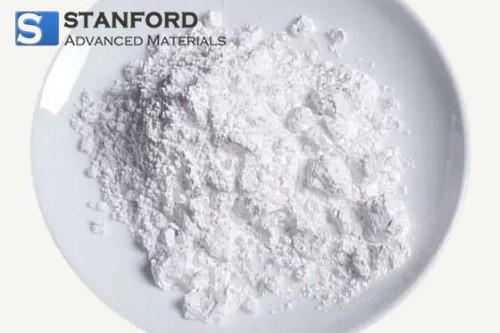Case Study: Enhancing Electronics with the Luminescent Brilliance of Europium Oxide
Introduction
In the intricate world of electronics, certain elements rise to prominence for their exceptional contributions. Among these luminaries, Europium Oxide (Eu2O3) shines as a beacon of luminescent brilliance with its unique optical and electronic properties. It has carved an indelible niche within the electronics landscape.
This exploration delves into the captivating realm of Europium Oxide and its profound impact on the evolution of electronic marvels. Hope that you can have a further understanding of its applications in electronics.

Figure 1. Electronic Components [1]
What Is Europium Oxide?
Europium Oxide (Eu2O3) is the oxide of the rare-earth element europium (Eu). This white or pale-yellow solid has a high melting point, and is insoluble in water and is relatively stable at normal temperatures and pressures. Its most notable characteristic is the ability to exhibit luminescence, making them invaluable in applications like phosphors for displays and lighting.

Figure 2. Europium Oxide (Eu2O3)
How Is Europium Oxide Used in Electronics?
Thanks to these features, Europium Oxide finds applications in various fields, particularly in electronics.
1. Phosphors and Luminescence: This oxide is a crucial component in the creation of phosphors for cathode-ray tube (CRT) displays, plasma displays, and fluorescent lamps.
2. Laser Technology: Eu2O3 is employed in laser technology, particularly in solid-state lasers and fiber lasers. These lasers find applications in communication systems, medical equipment, and research laboratories.
3. Semiconductor Manufacturing: In the semiconductor industry, Eu2O3 serves as a dopant material to modify the electrical and optical properties of semiconductors.
4. Optical Coatings: Eu2O3 is employed in thin-film optical coatings, enhancing the reflectivity, transmittance, or absorption of specific wavelengths of light. These coatings are integral to optical devices like lenses, mirrors, and filters used in lasers, cameras, and spectrometers.
Case Study: Europium Oxide (Eu2O3) Used in Electronics
--The Challenge
A company sought Europium Oxide powder for the manufacturing of LED and LCD backlight modules. It emphasized specific powder characteristics, including particle size, stability, purity, and luminous effect, to ensure optimal performance and visual quality in the final products.
--The Solution
In response to the discerning requirements of advanced LED and LCD backlight modules, Stanford Advanced Materials (SAM) brought forth a tailored recommendation.
Particle Size for Color Uniformity: A smaller particle size, typically within the range of 1-10 microns, is recommended to ensure even dispersion and color consistency across the backlight module.
Chemical and Thermal Stability: The recommended Europium Oxide powder must exhibit excellent chemical and thermal stability, so the powder remains unaffected and the likelihood of unpredictable changes would be reduced.
High Purity for Manufacturing Integrity: SAM opts for a high-purity powder to minimize the introduction of impurities that could negatively impact the material's luminescent properties and overall performance.
Customized Luminous Effects: Customer preferences for specific luminous effects, such as color temperature and saturation, are integral to the design of LED and LCD backlight modules as well.
--The Results
Through meticulous consideration of these factors, manufacturers deliver backlight modules that meet customer requirements for uniform color, stability, and luminous efficacy.
Conclusion
Europium Oxide plays a vital role in various electronics applications, ranging from display technologies and lasers to semiconductors and radiation detection. Its optical and electronic properties contribute significantly to enhancing the efficiency, performance, and functionality of a wide array of electronic devices and components.
Stanford Advanced Materials (SAM) provides high-purity Europium Oxide and a wide range of rare earth chemicals. Customized products are also available. Feel free to submit an inquiry if you find yourself intrigued.
Reference:
[1] Electronics. (2023, August 9). In Wikipedia. https://en.wikipedia.org/wiki/Electronics

